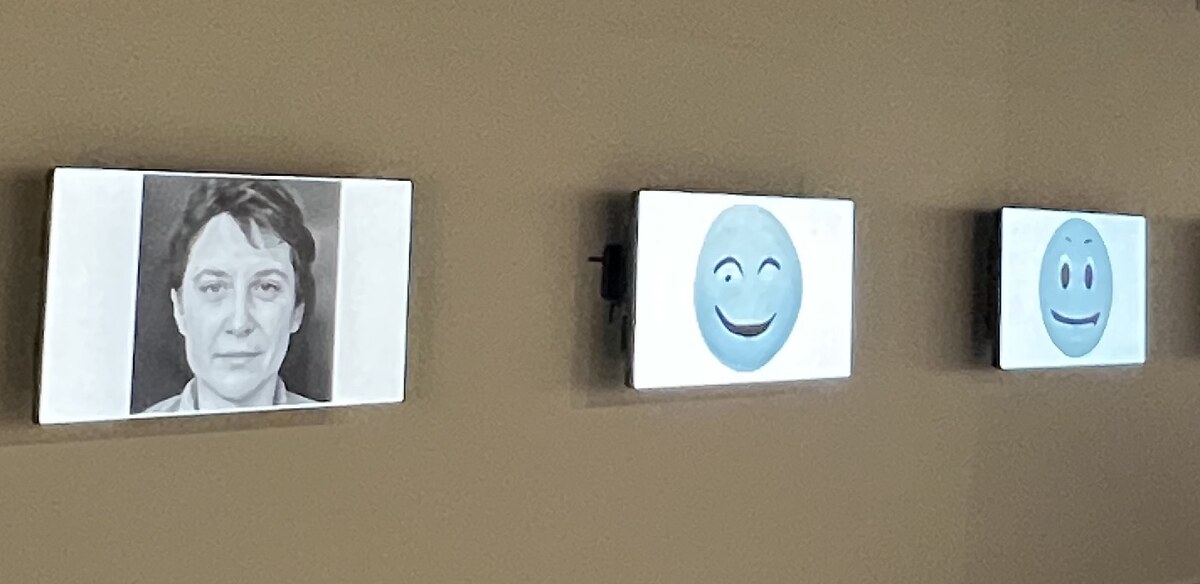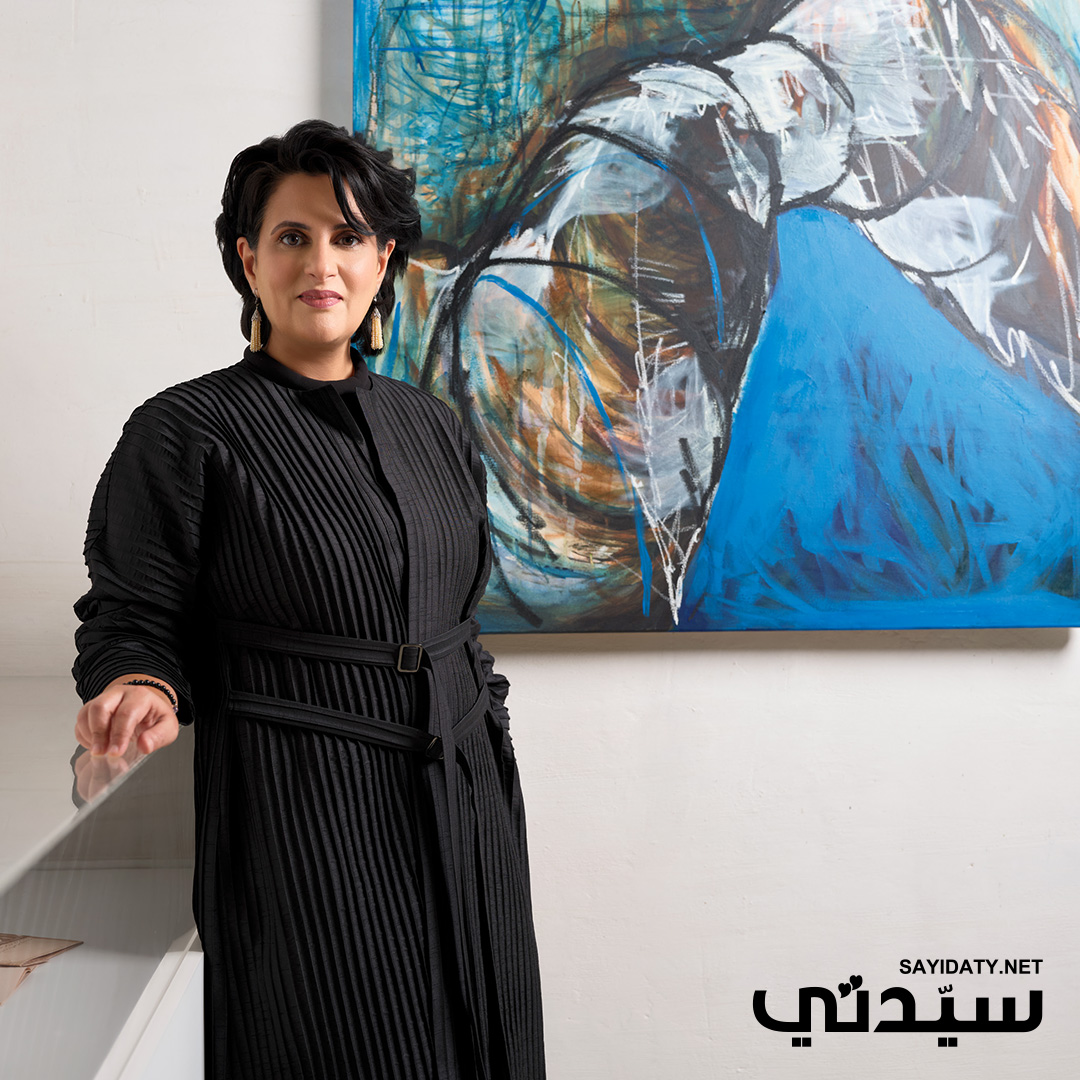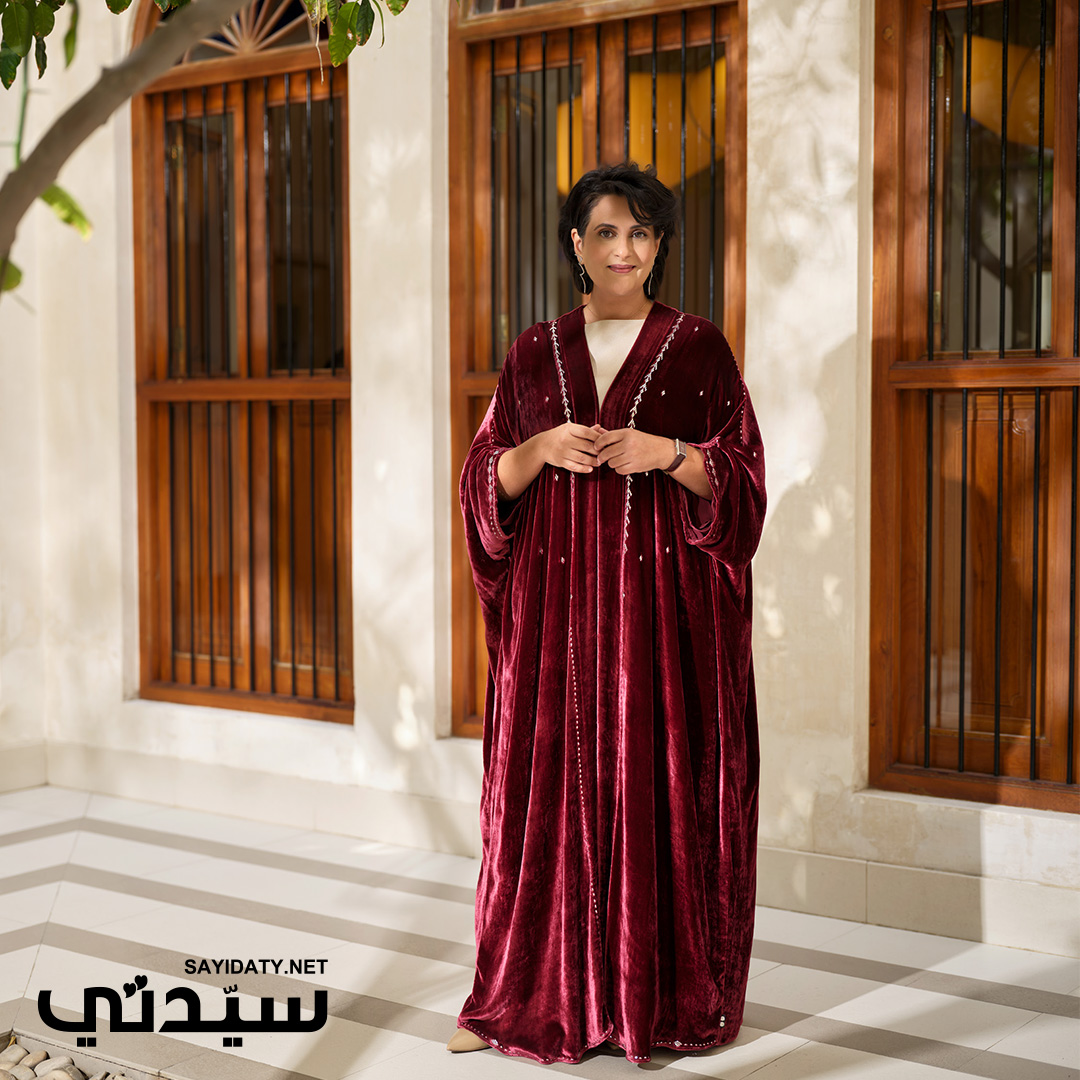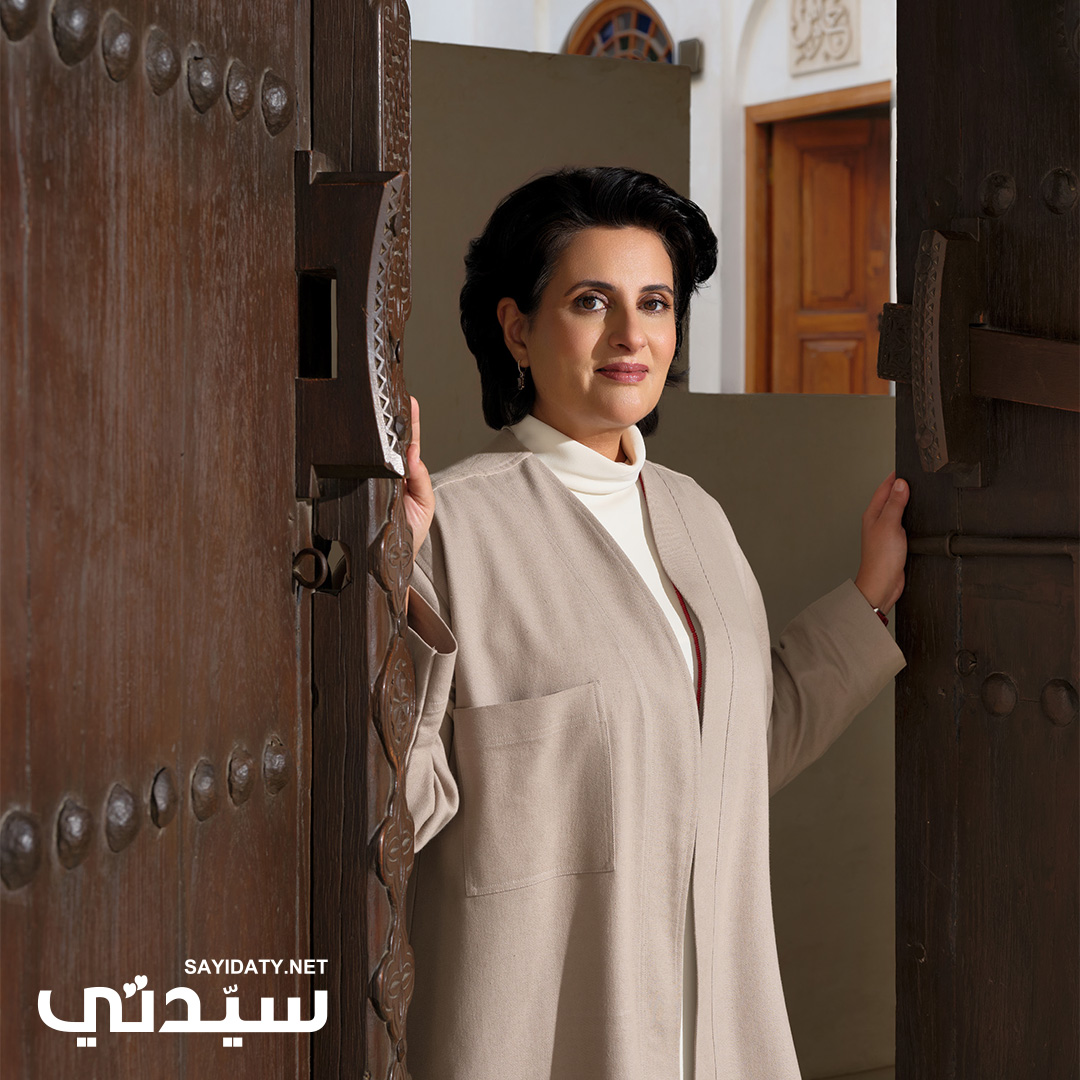DUBAI: “I call myself a visual artist that focuses on social conditioning and memory.” That’s Saudi artist Daniah Alsaleh’s ‘elevator pitch.’ But, like all such handy soundbites, it fails to convey the complexity and ambition of her layered, multimedia works, which have seen her land several prestigious residencies and awards, including the 2019 Ithra Art Prize.
For someone whose work has made such an impression on so many, Alsaleh took quite some time to convince herself she was ready to present that work, which at the time was largely influenced by Islamic geometry, to the world.
“I was interested in art from a young age, but I never really had the opportunity — I went to school and university in Riyadh, where I was born,” Alsaleh tells Arab News. “It was when I moved to Jeddah that I really got into art. I studied at the atelier of Safeya Binzagr, who recently passed away, for probably five, six years. That’s how I really learned the basics of drawing, painting, color theory, shape and form. Then, every time I had the chance to travel abroad, I would take courses in paintings and life drawings. I got hooked on Islamic geometry, and then — after all these years of learning arts, probably around 10 years, I had the confidence to actually finish artworks.”
Her first show was a group exhibition in 2012. “No one knew who I was, but a lot of the people asked about my work,” she says. In 2013, she joined the roster of artists at Athr Gallery. Now, she says, “it was getting serious,” and she decided to become a full-time artist. In 2014, she moved to London.
“I decided to apply for a Master’s in Fine Art at Goldsmiths. I didn’t get in but they offered me a place on another program, which was called Computational Arts and that changed my practice completely, 180 degrees,” she says. “This program catered for artists with no background in technology and we were taught how to use physical computing to create installations, and coding as well — like processing and frameworks. I really got hooked. Machine learning resonated with me — we don’t call it AI, we call it machine learning; it’s a program that learns. It changed my practice completely from Islamic geometry to a more contemporary way of expressing myself.
“I’m not an AI artist. I’m a visual artist,” she continues. “I have machine learning in my toolbox, next to my paints and next to my canvas and next to my videos and next to my audio files and next to my photos. And depending on the context, I just choose which tool I want to use.”
As suggested by her elevator pitch, that context usually involves exploring our relationship with memory and media.
“I’m interested in social conditioning in the everyday — things that we take at face value, things that we take for granted,” she says. “These things that we habitually do, where do they come from? And usually I look at media and how that affects us; how it affects our memory, what stays and what gets erased. And how we reprogram our memories, sometimes, just from looking at content on social media. So that’s really what my interest is.”
Here, Alsaleh talks us through some of her most significant works.
‘Restitution’

This is an example of my older work. It’s from 2017. You see this perfectly organized structure — five panels of hand-drawn Islamic patterns — but then there’s this random brushstroke across them all. That’s my intervention. It’s a commentary on how we are very hooked on celebrating tradition and practices. We can celebrate and appreciate history and tradition, but, at the same time, we really need to be open to change — accepting new things and new ideas.
‘Sawtam’

This artwork — an audio-visual installation — was a big transition for me; a big jump from my paintings. It was created while I was still doing my Master’s, and it’s the piece that won the Ithra Art Prize in 2019. It addresses forms of expression. The visuals were inspired by Manfred Mohr, a German new-media artist who created similar images based on algorithms in the Sixties, and they move or vibrate every time the sound comes out. There were sounds coming from every screen — the pronunciation of the Arabic letters — and when you put them all together in one space, it’s like a cacophony of noise. It’s a commentary on how communication sometimes gets lost, or sometimes gets through. It has a lot of meanings, and it’s very layered, but it’s basically about communication and forms of expression.
‘That Which Remains’

This is a large installation I did for the first edition of the Diriyah Biennale. Again, it’s about memory: collective memory versus individual memory. Collective memory is where we remember things in monuments and celebrations — like National Days. That’s where our collective memory is. But within individual memories, a lot of things get lost, especially when there’s a lot of development and change. So, it’s a — very gentle — commentary about what we’re witnessing and experiencing in Saudi Arabia right now: the individual memories of these characters on the cylinders, which are the buildings and the houses and the structures that are being developed and changed.
The faces on the cylinders are machine-generated. They’re deep fakes. I collected my own data sets of faces, and then trained the machine to learn to create new faces for me. And then I took those new faces and transferred them onto the cylinders. The paintings are inside-out, so when the cylinder is lit, you can see these shadows of these faces. And then people who visit say, ‘Oh, she resembles my aunt, this resembles my uncle’ and so on. They might resemble them, because they have Saudi or Gulf aesthetics, and the machine learns what you focus on. So if my data set focuses on a certain aesthetic, that’s what it creates. But these people never existed.
‘Evanesce’

This was actually based on my degree show at university. I have two identities: The Western identity and the Gulf identity. And whenever I’m in the West, the news is so different from the news you see in the Middle East. Like, since the Iraq War, all the images you see about Iraq are destruction and war and poverty and craziness and explosions and guns. But what I know about Iraq is culture and arts and literature and science. So for my degree show I collected all these images, Iraqi images, from the 40s, 50s and 60s, for the machine-learning program and created these new images with, like old photo aesthetics. But they’re all deep fakes. And “Evanesce” is a continuation of this research, but focused on the Golden Age of Egyptian cinema. I watched a lot of Egyptian movies, and I collected 15 tropes that are repeated in most of them — the extravagant stairways, the cars, answering the old classical telephone, the belly dancer, the family gathering over breakfast, the chaos in the morning, the protagonists and their friends, the embrace and the romance, the palm trees and the close up of certain buildings. I created data sets based on each trope, and then each data set was trained on a machine-learning program. So then I had 15 outputs of this machine learning based on these tropes, which I stitched together to create this 10-minute film. And this morphing from one image to the other that you see in the video just resembles how we remember things. Again, it’s a commentary about social conditioning. These movies are so prevalent and so important in the MENA region within conservative societies, but the images on screen really contradicted their culture and their values. So it’s a commentary on how, as a society, we watch these things that really contradict our belief system and tradition. But there’s some sort of… it’s similar to obsession. These movie stars and these movies were an obsession to a lot of people within conservative countries. It’s instilled in the collective memory and still resonates to this day. These movies spread from North Africa to the Middle East, to lots of regions where there are a lot of conservatives. So there’s a lot of tension and contradiction between these two worlds.
‘Hinat’

This is an important piece for me. It was created during a residency I had in AlUla in 2022. It’s based on this Nabatean woman — Hinat — who has a tomb in (Hegra). That was very inspiring to me. Obviously, she was from a very prominent family, because she was wealthy enough to have a tomb for herself, and it was under her name. This installation is made up of collages of different views of AlUla and I cut out rectangles on each canvas, and I projected videos into the rectangles. These videos are inspired by Hinat, imagining her future generations, from her bloodline, living in AlUla and roaming around across these landscapes. And the videos were created by machine learning. I hired three ladies from AlUla. We went to different locations and got them to wear these different colorful fabrics. The we shot videos and created data sets from each video, and then trained the program, and it created these very ghostly, abstract figures that move across these landscapes.
‘E Proxy’

This was part of a solo show I did in 2023. It’s a video in which a face morphs into an emoji and then morphs back into a face. It’s a commentary about the ubiquity of emojis and the way we express ourselves in emoticons and pictograms. It’s interesting to me and it’s important. You can’t express our range of emotions in, like, 10 or 20 smileys. It’s just so restrictive. So, what’s happening there? I’m not giving an answer, but I’m opening up a space for questioning ourselves. And, listen, I’m a big advocate of emojis — they help me save time. But I’m asking what is happening here: Is it conditioning us into being less expressive? Or are we conditioning it to be a tool to help us express ourselves? There is this duality. I mean, there’s no correct point of view; it’s very subjective. But it’s always worth raising these questions.
‘The Gathering’

This was the result of another residency I did, supported by the French Embassy in Saudi Arabia, with Catherine Gfeller, a French-Swiss artist. We wanted to know who are the females that are living in Riyadh — not necessarily Saudis — as it goes through this explosion of art and culture and infrastructure. I was born and raised in Riyadh — I live in Jeddah now, but I know Riyadh very well, and I’ve seen the changes. And I’m just in awe and disbelief at what I’m seeing. So, to cut a long story short, we did an open call, and there were 37 ladies who participated who came from 11 different countries — different backgrounds, different generations, different professions. We interviewed them and videoed those interviews, and my focus was on the emotional side of things: How do you deal with loneliness in a big city? What does love mean to you? What about resentfulness? How about forgiveness? Then the audio of the interviews kind of fades in and out. I put them all together as though we’re sharing our thoughts and emotions — a female gathering. And the videos were all manipulated by AI as well; it’s a layered effect, and it’s referencing the different aspects of emotion that we go through.
‘36’

This was part of the same project as “The Gathering.” It’s a composite of the faces of all the women who took part, except for one lady who refused to take off her niqab, so I couldn’t include her in this image. I don’t think this was a new idea — I bet it’s been done many times before — but what I wanted was a commentary on… faced with this perception of what Saudi Arabia is and what Riyadh is and who the women there are… actually, it’s a multicultural city with diverse backgrounds. And when you see this image, you don’t know where the ‘person’ comes from, what their ethnic background is, among other things. You can think of many things when you look at that image.

























